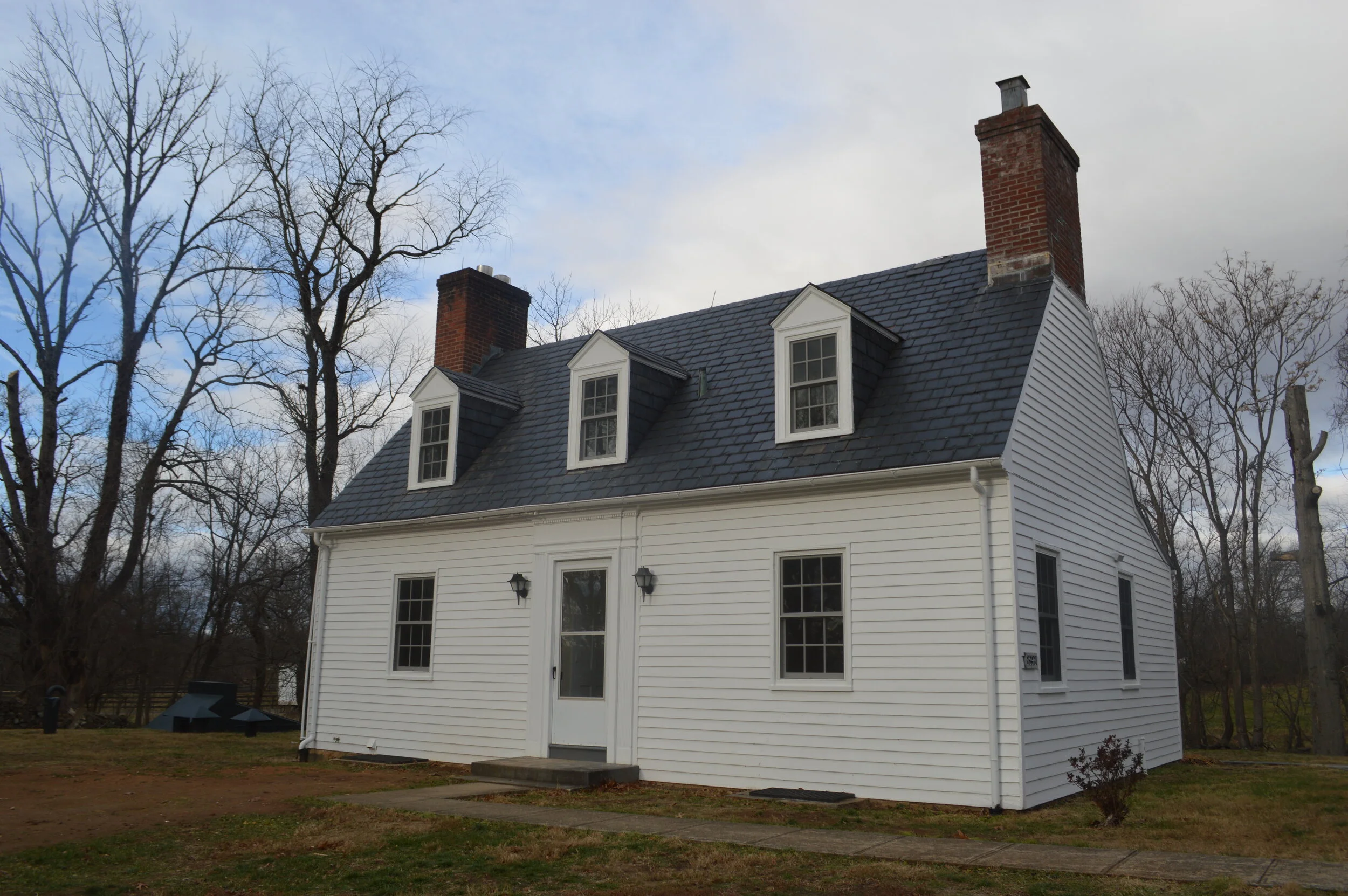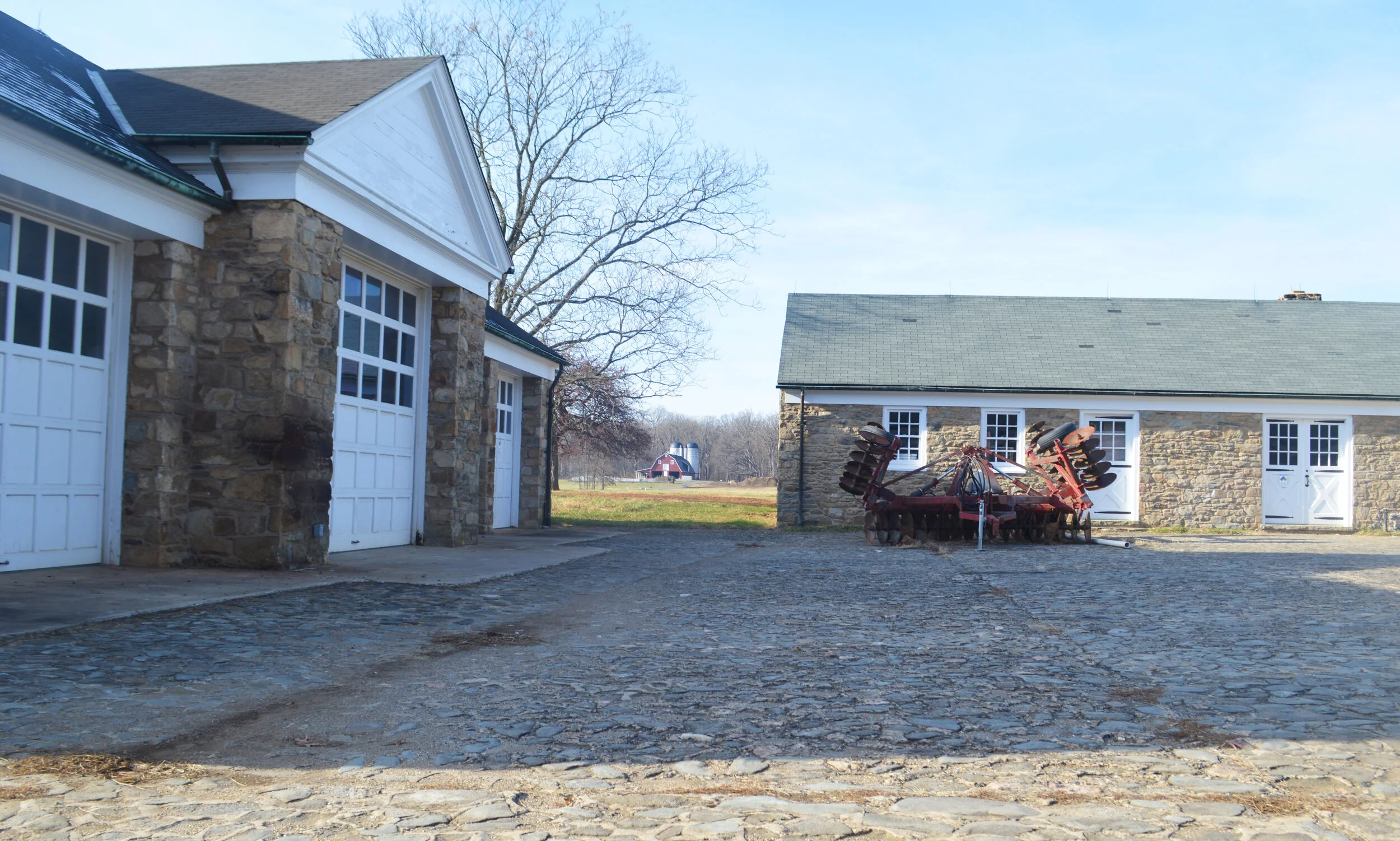Meet our Staff: Head of Facilities and Infrastructure Skip Glascock talks Caring for Oak Spring
OSGF
Few people know the nooks and crannies of Oak Spring better than Skip Glascock, the foundation’s of Head of Facilities and Infrastructure. In the nearly forty years he has worked on the estate, Skip has done everything from hunt down parts of antique laundry machinery in the 1990s, to oversee the conversion of horse stalls into luxury overnight accommodations in 2017, along with the countless other tasks that go along with caring for over 80 historic buildings.
But perhaps the most challenging job for the Marshall, VA native and his skilled team has been transitioning the property from a private estate to a working foundation. Although the plant-aficionados who pass through Oak Spring love spending time outdoors, they also need infrastructure suited for a wide variety of activities, ranging from artist studios, to academic conferences, to long-term housing. As OSGF continues to grow, it is up to the facilities and infrastructure team to ensure that Oak Spring’s buildings, some of which are nearly 100 years old, are ready for these new purposes - all while preserving the unique designs and features given to them by Paul and Bunny Mellon, and ensuring that they are as environmentally-friendly as possible.
In this latest “meet our staff” O&A, we sat down with Skip to talk about just what goes into renovating and preserving the Oak Spring Garden Foundation.
What brought you to Oak Spring?
“(Bunny Mellon) had that gift of designing buildings that just speak to you in some way. Obviously, what we want to do is modify the buildings so that we can use them, but not lose that natural charm that they had in the beginning.”
SG: So, my father-in-law was the head of security here for a while, and I had always heard about this place - I grew up around here, and I'd even seen Mr. Mellon a few times, and so I had a pretty good idea of what was here. In the early 80s, the economy was not very good, especially locally, so I worked for my father who had a one-horse electrical contracting outfit and had been in business for himself since World War II. Anyway, the work got really slow, and I had a new family...so I started looking for another job. My father-in-law says, “We always need maintenance personnel at Rokeby, and one thing we don't have is an electrician” . . . so, by 1988 or 9, I basically had all the electrical maintenance.
Then we had a fire at the utility building, and because of that, it triggered this electrical survey . . .so I went through the whole property with the electrical engineer, every attic, every crawl space, every closet, every nook and cranny, looked at the whole electrical system, so then when we got done, the engineer he issued this 200 page report, so it was my job to go back and repair all the problems he had found, so that pretty much gets this to where we are now . . . so I handled all their electrical maintenance until 2015 until they started the foundation, and (the Mellons’ executor) Alex Forger came to me and asked if I would like to handle all the maintenance for the new foundation. Obviously, there were very few people positioned as well as I was to do that, because I had seen it for so long, and had been involved in so many phases of the infrastructure.
What is the facilities team working on right now?
SG: Currently, we are remodeling the Paris House for our artists in residence, and we're also finishing up the underground plumbing project for the Rokeby side, because the plumbing was in such terrible shape. It's just all rotted, and so we just reached a point where every year, we would have a handful of outages where the pipes would just burst, so it makes sense to finally get in there and redo it all. Since everything is plastic pipe now, we don't need to worry about it rusting again. . . we should have greatly decreased our maintenance issues on the plumbing over there.
What are some of the challenges you experience when it comes to renovating these buildings?
SG: Well, probably the single biggest challenge is how to get central air in them, because these buildings were not designed to have ductwork run through them. The invention of these mini splits (cooling systems), they're just a godsend when it comes to doing that, because they take up very little space, they're very quiet, they're very efficient, and they're heat pumps, so they give you heat as well as cooling . . . So the other thing you have about these old buildings and trying to remodel them is that the safety standards and the building standards have changed so much. Probably 75 percent of staircases in old buildings won't pass the code because they're too steep. Back then, they didn't worry about that too much, and there was little thought, if any, given to handicapped accessibility. You just couldn't get there, so that's another tricky part, is trying to make these buildings accessible to the handicapped. Obviously, in the end, what we want is a functional building that still has the charm that it originally had.
Farm buildings, which include a granary, on the Quadrangle, which are among the structures slated for renovation. Two artists studios were created in these buildings in 2019.
How do you go about preserving that architectural charm?
SG: I'm sure that people who take care of Monticello and Mount Vernon and places like that, they deal with this everyday, only amplified because of course they have to be so careful about how they change anything. Obviously, we're not under that strict of protocol, but we do want to keep the exterior of the buildings and maintain that charm that's already there, and inside, as well. Luckily, the Mellons very rarely built anything just to build it - especially Mrs. Mellon, she took such great care in designing her own structures, so she tried to do things that were unique. That was her gift, she had that gift of designing buildings that just speak to you in some way. Obviously, what we want to do is modify the buildings so that we can use them, but not lose that natural charm that they had in the beginning. For instance, if we ever fully develop that quadrangle where the granary and those other shops are, that complex is so much more that just a basic farm complex, it has that cobblestone courtyard that connects the buildings. Because of that, we have the opportunity to make something really special out of them if we take our time and design it right.
A goal of OSGF is to be as environmentally friendly as possible. How do you make these historic buildings energy efficient?
SG: The first item that comes to mind is these mini splits again. Because they are heat pumps, they're not burning fossil fuel, they're just running on electricity. Like any heat pump, they extract the heat from the ambient air around, and then through a compressor they add to that to heat the space, and conversely in the summer, they extract cool air from the ambient suppressant and blow cool air into the building. So they're very energy efficient and they're very environmentally friendly.
One of the other things that we've done, which we first did at the Memory House (now the Oak Spring Gallery) - when Mrs. Mellon built that, which was in the last 10, 5 years of her life, she chose to put geothermal, and that is very environmentally friendly because it extracts the heat it needs from the ground . . . so, we do have geothermal in the Gallery and the main house and the guest house, and that was a monumental challenge to try and get those systems in there because again, the building itself was designed to be run on a limitless supply of fuel oil, basically.
We are also considering sometime in the future installing solar panels on the air strip, that's one idea that we're kicking around. We've got all that area of the airstrip, which is of very little use to us right now . . . then maybe on the far end, where it wouldn't be as noticeable to passersby or neighbors, we could construct a solar field and use that to generate some of our own electricity.
The Robertson Dining room, one of the recently renovated spaces in the Nora Mellon House.
Of all the projects you and the team have worked on, what are you most proud of?
SG: Probably the one we're most proud of is Nora Mellon . . . at the time we were doing it, late 2017 and early 2018, they had hired (Head of Horticulture and Landscape Programs) Andy Jackson to come and (Foundation President) Peter Crane had decided he wanted to put Andy in that house, and all of a sudden there was this mad rush to get it ready for him, because he was coming in February, and we were really just getting started on it in December.
So we only had a couple months to get this thing ready . . . we replaced all the windows in the house, we replaced virtually all the light fixtures, we replaced the plumbing fixtures, we replaced the appliances, we redid the glass enclosed back porch, we redid a glass enclosed breezeway on the front of the house, and we redid some of the floors. The whole house got a facelift, and it was amazing that much got done so quickly . . . the guys did a fantastic job. I think they really impressed Peter and some of the other folks - I think it went a long ways to show him the quality of craftsmen that he has here.
What’s next on the docket for the you and your team?
I feel like my job is to look at the big picture, because this place is almost like a little town. So, somebody has to ride herd on the infrastructure, and make sure we don't outgrow it, or that we don't wind up developing buildings or areas where we can't supply electrical, we can't supply water, or whatever. So, I try to keep that masterplan in the back of my head . . . so the next push will be the Bank House, and we want to try to get it renovated and ready for artists this spring. Along with that is that huge garage down there that Peter wants to turn into two art studios, so that has to be done between now and the spring as well. In addition, we're supposed to dismantle the granary on the inside to expose the walls and see just how much renovation that's going to require to turn it into a concert hall.
To take a look at some of the other recently renovated spaces at Oak Spring, please visit https://www.osgf.org/convenings.






